The Flowering Phase Of Cannabis Cultivation
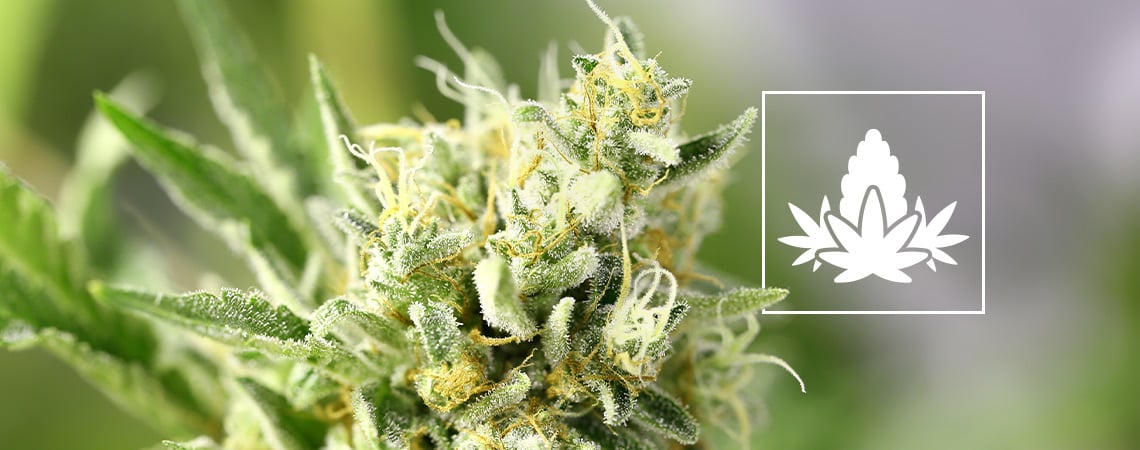
The flowering stage is when the exciting stuff really starts to happen—you begin to see your trichome-laden buds take shape! Getting everything right during this stage is a surefire way to achieve a great harvest. Here's how!
The flowering stage marks a pivotal period in cannabis cultivation, when buds form and the plant's potential for yield and potency comes to fruition. It’s what most growers wait anxiously to see, and it’s during this stage that all of the efforts begin to pay off!
This phase is characterised by the transition from vegetative growth to the development of flowers, triggered by changes in light exposure, or in the case of autoflowering plants, a genetically predetermined veg stage. Understanding the nuances of the flowering stage is crucial for growers looking to get the most out of their harvest. By mastering the environmental conditions, feeding, and care specific to the bloom phase, cultivators can significantly impact the quality and quantity of their final product. In this article, we aim to show you how to do that.
What is the flowering phase?
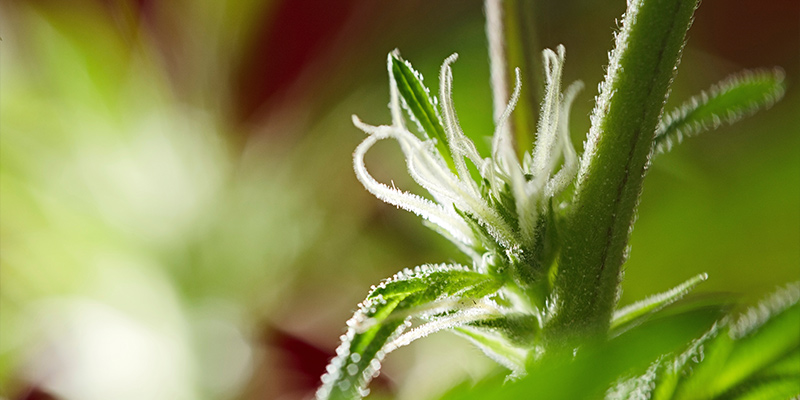
The flowering phase is the period when plants stop growing taller and start developing buds. To be more exact, the pre-flowering stage, which occurs between the vegetative stage and the true flowering stage, can actually see plants almost double in size within a very short period of time. But once this period ends, so too does upward and outward growth.
From here, plants begin to develop small pistils at the nodes, which then develop into large calyxes coated in trichomes. The transition to the flowering phase is initiated by reducing light exposure, mimicking the natural progression towards the end of the summer and the beginning of autumn. In autoflowering plants, which aren’t affected by the photoperiod, flowering will occur after a genetically predetermined amount of time—usually about four weeks.
How long does the flowering phase of cannabis last?
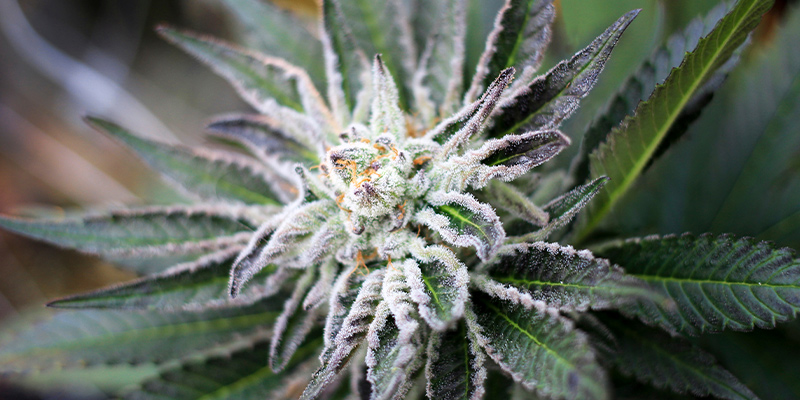
The duration of the cannabis flowering phase varies depending on the strain, but typically lasts between 6 and 12 weeks, or sometimes even longer for landrace sativas that come from the tropical regions of the world. Modern indica strains often complete the flowering phase in 8 to 9 weeks, while sativa strains may take longer, around 10 to 12 weeks. Hybrid strains fall somewhere in between, depending on their genetic makeup. More and more often, breeders are managing to reduce flowering times while retaining the desired characteristics of the plant, making everyone’s lives easier and testing the grower's patience less.
Understanding the specific flowering timeline of the chosen strain is essential for timely and effective cultivation management. This is especially true if you intend to grow outdoors, where the local climate will determine how long you can afford to let a plant flower before the weather turns too wet and cold for it to survive.
Best grow room conditions for the flowering phase
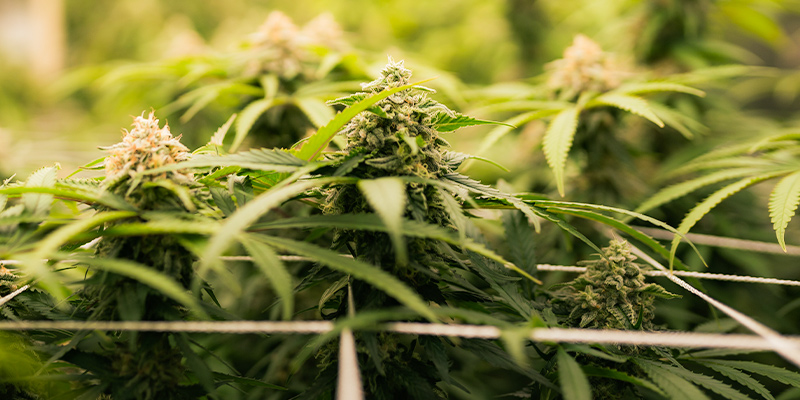
Creating the ideal grow room environment is critical during the flowering phase to ensure the development of high-quality cannabis buds. Key conditions to monitor and control include:
- Lighting: In order for photoperiod cannabis plants to bloom indoors, you must reduce light exposure to a maximum of 12 hours per day. Any more than this, and plants will stay in the vegetative phase. Moreover, the type of light cannabis plants require changes during bloom. To mimic the natural spectrum of the autumn sun, LED grow lights often come with bloom settings, which have a more red spectrum that is perfect for helping flowers to develop.
- Temperature: Ideal daytime temperatures range from 20 to 25°C, with nighttime temperatures of 5–10 degrees cooler to mimic natural conditions and promote flower development. Cooler nighttime temperatures will also help to bring out purple hues in those plants that are prone to it. When it comes to temperature, make sure you understand the specific requirements of the strain you’re growing, as each has its own needs and nuances.
- Humidity: Gradually decrease humidity to 40–50% during flowering to reduce the risk of mould and powdery mildew on/in the dense buds. Combined with pruning of the bushier, lower sections of the plants, you can help to keep your crop safe from fungal infections.
Flowering phase: Duration and light cycle
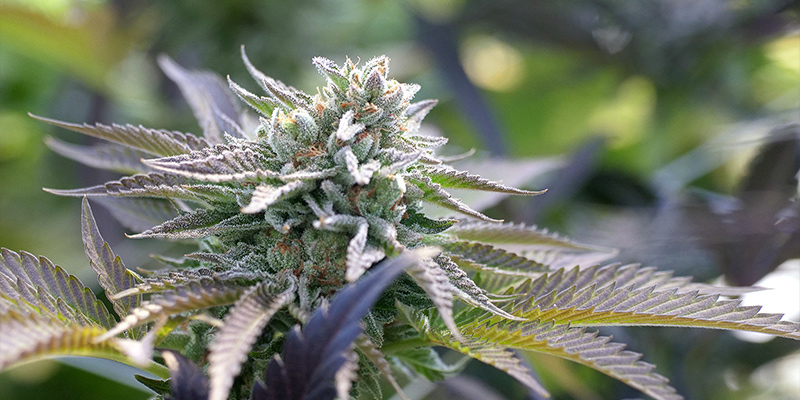
Most growers will stick to a 12/12 light/dark cycle throughout the entire flowering period, as it is widely agreed that this yields the best results. To trigger flowering indoors, you should switch from your vegetative light cycle (for instance, 18/6) to 12/12 once you’re ready for plants to bloom. Below, we break down the flowering period into its constituent parts, and explore each in turn.
Pre-flowering
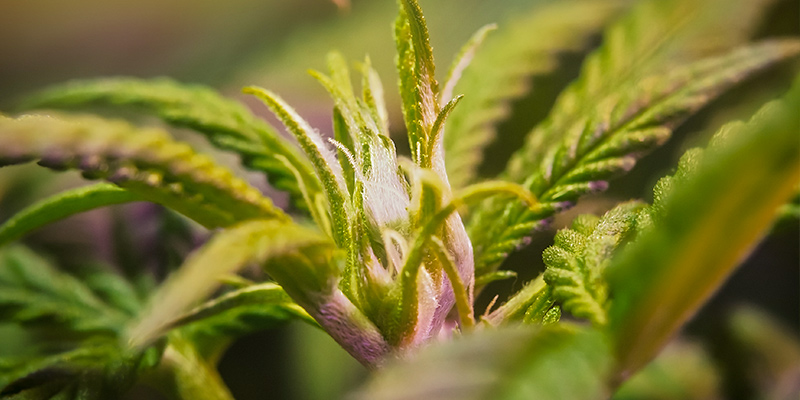
The pre-flowering stage serves as the transition from vegetative growth to full flowering and can last for 1–2 weeks. During this time, plants start to show their sex, with female plants developing pistils and male plants forming pollen sacs. It's crucial to identify and separate male plants to prevent them from pollinating females, which would lead to seeded buds and reduced yields and potency. However, if you’ve used feminized cannabis seeds, the chances of males developing are miniscule, and therefore shouldn’t be a concern for most growers.
Early flowering
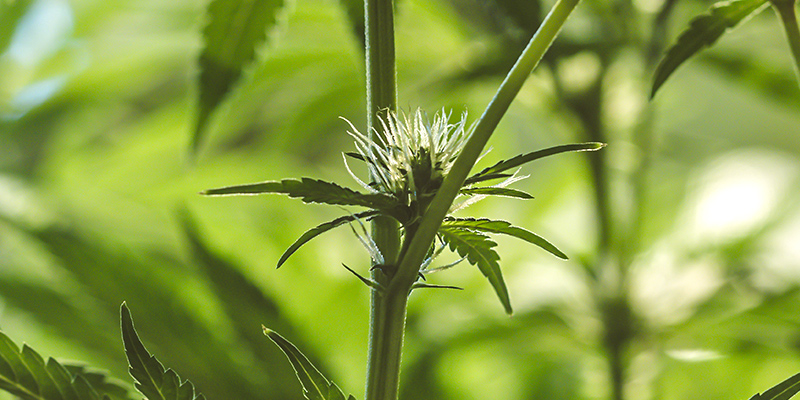
In the early flowering stage, plants begin to form the initial buds, or flowers. This period is critical for bud development and lasts about 2–3 weeks, depending on the strain. Growers should monitor for nutrient deficiencies and pests, as plants are particularly vulnerable during this phase, and getting everything right sets the scene for the peak flowering stage, during which most of the bud development occurs. Increased levels of phosphorus and potassium are beneficial to support budding.
Peak flowering
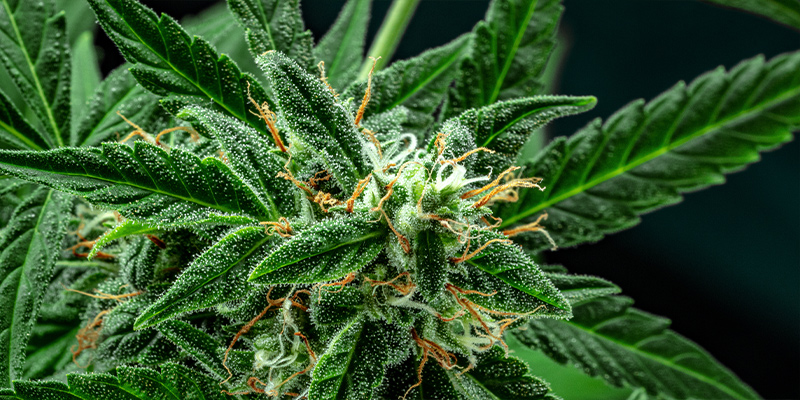
During the peak flowering stage, buds grow in size and density and start accumulating trichomes—the resin glands in which cannabinoids and terpenes are produced—and it is at this point that you’ll start to smell your plants, and get some idea of what they will look like when fully matured. This stage usually spans 3–4 weeks, and you will see the greatest development in terms of bud size and density during it. Optimal care includes maintaining stable environmental conditions and providing bloom-specific nutrients to enhance bud growth and potency.
Late flowering and maturation
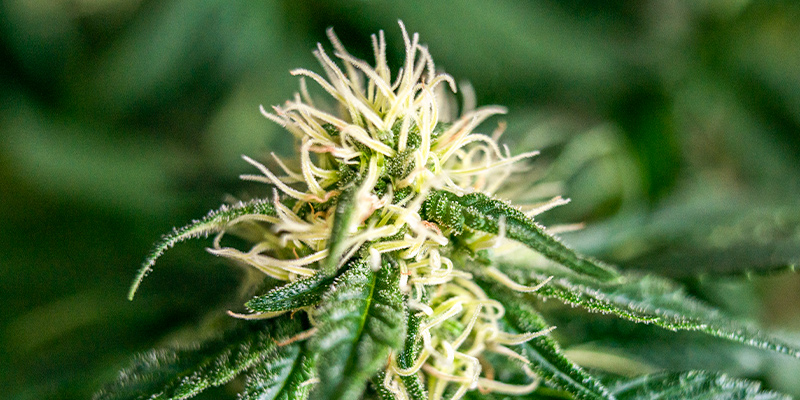
In the late flowering or maturation stage, buds reach their maximum size and trichome production peaks, indicating they are nearing harvest. This final phase can last 2–3 weeks, and buds will likely cease to grow, but pistils will gradually turn more red and trichomes will go from clear, to cloudy, to amber, depending on how long the grower waits before giving plants the chop. Growers should carefully monitor trichome colour to determine the optimal harvest time for desired effects (more on this later).
Watering during the flowering phase
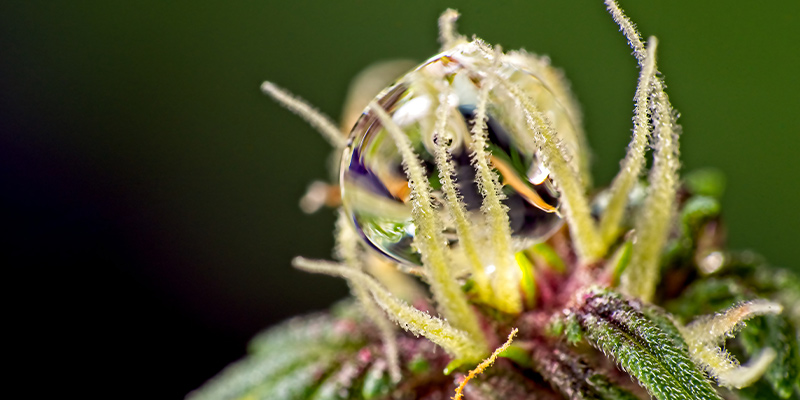
Watering practices must be adjusted during the flowering phase to meet the changing needs of the cannabis plant. Overwatering can lead to issues such as root rot, while underwatering can stress the plant, affecting bud development. Here are key considerations:
- Consistency: Maintain a consistent watering schedule, allowing the top inch of soil to dry out between waterings. This is key and doesn't change from the vegetative stage—if the topsoil is moist, your plants don't need more water!
- Quantity: Flowers require a lot of water, so you will need to increase the amount you provide to accommodate this need. This can be achieved most easily by testing the topsoil more often and watering once it dries, as it will dry quicker as the plants uptake more water. Then, gradually reduce the amount of water as the plant approaches harvest to encourage resin production and facilitate drying and curing processes post-harvest.
Feeding during the flowering phase
Feeding during the flowering phase shifts towards nutrients that support bud formation and development. Here’s how to optimise feeding:
- Phosphorus and potassium increase: Enhance phosphorus and potassium levels to support flower growth and development, while reducing nitrogen. In earlier stages of growth, nitrogen is needed in larger amounts, but as the plant reaches full size and flowers begin to grow, it requires significantly less. High-quality cannabis feeds should come in veg and bloom varieties, and will contain the necessary ratios of each nutrient to get the most from your plants.
- Monitor nutrient uptake: Regularly check leaves for signs of nutrient deficiencies or excesses, and adjust feedings accordingly. Even if you spot signs of deficiency, chances are that the problem does not lie in feeding your plants too little, but in their ability to uptake the necessary nutrients. This could be caused by pH issues or even overfeeding. So always be careful before upping the fertiliser dose.
- Flush: Begin to flush out nutrients 1–2 weeks before harvest to improve the taste and quality of the buds. Some growers swear by this; others skip it. The thinking goes that by flushing the medium, plants use up all of their internal reserves (stored as salts) and taste better as a result once they’ve been dried and cured.
Training cannabis during the flowering phase
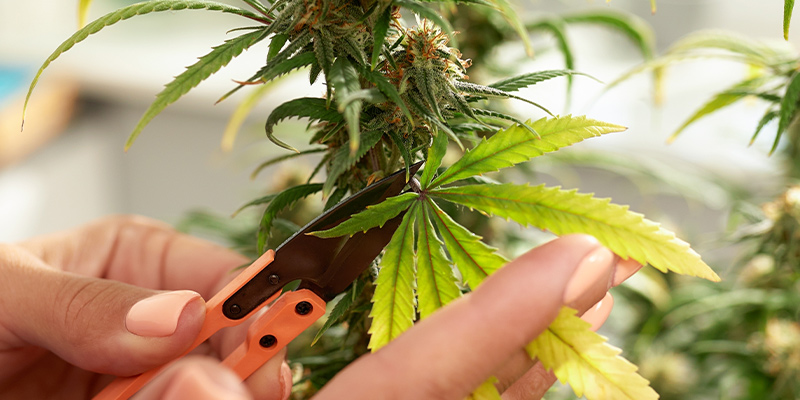
Generally, all training should take place during the vegetative stage. During the flowering stage, most of the plant’s energy is directed toward bud production, so any stress or damage at this point is likely to be counterproductive. So if you haven’t initiated training prior to flowering, don’t attempt to start it now!
However, you can and should prune during the flowering stage, for a couple of reasons. First, it can help to reduce humidity below the canopy, thereby reducing the likelihood of mould and mildew, which are most prevalent once buds begin to appear. Second, pruning the lower leaves that receive little in the way of meaningful light means that the plants can redirect the energy towards flowers, increasing their size and potency. In fact, you’ll see as plants mature that the lower leaves naturally yellow and die of their own accord, as they become redundant.
When to harvest during the flowering phase?
Identifying the optimal time to harvest is crucial to ensure the maximum potency and flavour of your buds once you dry and cure them. There are several ways to do it, with the most effective being observing the development of the plant’s trichomes—as these are ultimately what you’re trying to harvest. Other methods are less accurate, but can still guide your harvest decisions.
- Trichome inspection: Use a magnifying glass or a jeweller’s loupe to observe the trichomes on the buds. When around 70% of the trichome heads are cloudy white in colour, it’s the optimal time to harvest if you want the most THC. A greater amount of clear trichomes indicates a lighter, cleaner high, while more amber trichomes typically results in a heavier, more lethargic high. There will never be a point when 100% of the trichomes are milky white.
- Pistils: Alternatively, if you’re lacking some magnifying implement, then all is not lost. You can also judge roughly when to harvest by observing the pistils growing on the calyxes. When around 90% have turned reddish, you can assume the concentration of THC is at its highest. However, this is a more inaccurate method, as occasionally new pistils may continue forming, meaning that your buds will appear to not have matured even if they have. Ideally, inspect the trichomes instead.
Master the cannabis flowering stage
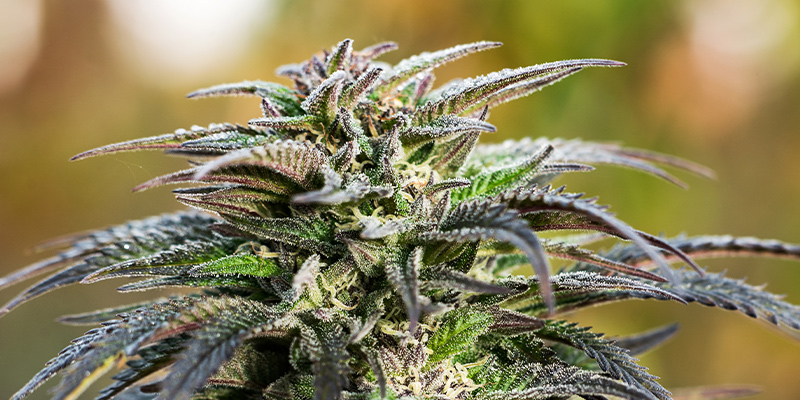
Understanding and managing the flowering phase of cannabis cultivation is essential for producing a successful crop, and it’s potentially the most exciting part of the whole grow too. From setting the right grow room conditions to monitoring the development of your plants and determining the perfect harvest time, every step in this phase contributes to the quality and quantity of your yield. With careful attention and care, you can optimise each stage of the flowering phase to achieve the best possible results from your cannabis plants, and end up with a bountiful, potent, and pungent harvest!





 United States
United States











